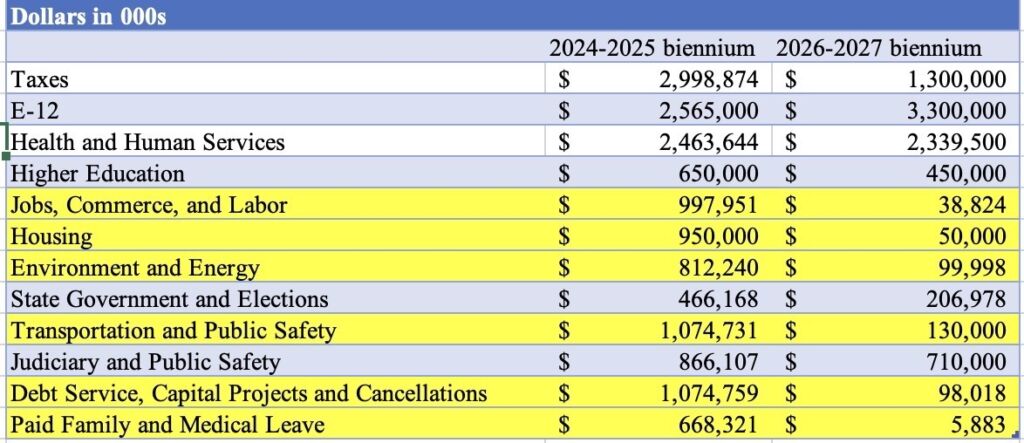Where Minnesota’s $17.5 billion surplus went: A series
Since the end of last week, the DFL has been celebrating the passage of their $3 billion tax relief plan, calling it the biggest tax cut in Minnesota’s history. But as American Experiment has pointed out here, here, and here, rebate checks and tax credits are not an effective way to cut taxes. Low-income Minnesotans already do not pay the state income tax. Giving them refundable tax credits is redistribution and not tax cuts.
But even if we were charitable enough to call the $3 billion a tax cut — which again it isn’t — $3 billion is less than a fifth of Minnesota’s massive budget surplus. Where did the rest of the surplus go? The DFL has used nearly all the surplus to grow Minnesota’s already big budget to an unprecedented size.
In the February 2023 budget forecast, the Minnesota Management and Budget ((MMB) estimated Minnesota’s budget baseline for the 2024-2025 biennium at $55.5 billion (including inflation). And in the 2026-2027 biennium, spending was expected to reach $56.3 billion.
All that has changed, however. At the end of the legislative session on Monday, DFL lawmakers agreed to spend nearly the entire surplus on new and existing programs, raising spending for the next biennium from the $55.5 billion baseline to $69.5 billion, as John Phelan outlined. Certainly, some of the new spending is nonrecurring. But in the 2026-2027 biennium, Minnesota’s budget will still be over 20 percent higher than what it is in the current biennium.
Where the money is going
In their generosity, the DFL has included something for everyone. About all the programs in the budget get a slice of the surplus. For some programs (highlighted in yellow), the surplus mainly gives a big one-time bump to be spent in the 2024-205 biennium. Those programs still get a bump — albeit small — in the next biennium.
Overall, Minnesota’s government is expected to grow significantly beyond the 2024-2025 biennium. And the biggest growth is going to come from our two biggest spending programs: E-12 and Health and Human Services. Some other programs that get ongoing hikes include Higher Education and Public Safety.
Table: Where the surplus went, by program

In this series, I will catalog where Minnesota’s surplus went, starting Part One with the growing welfare state. Subsequent blogs will look at the other numerous (and outrageous) spending programs, including among other things, free college. Stay tuned.